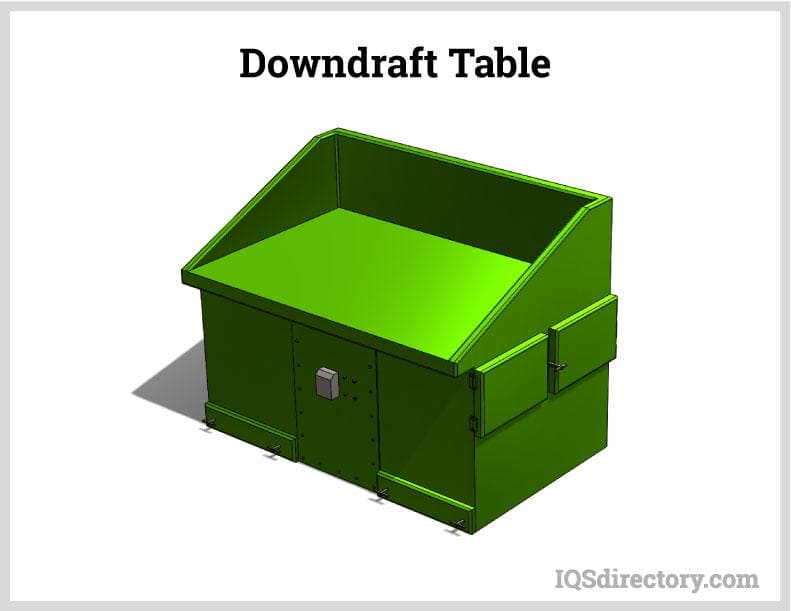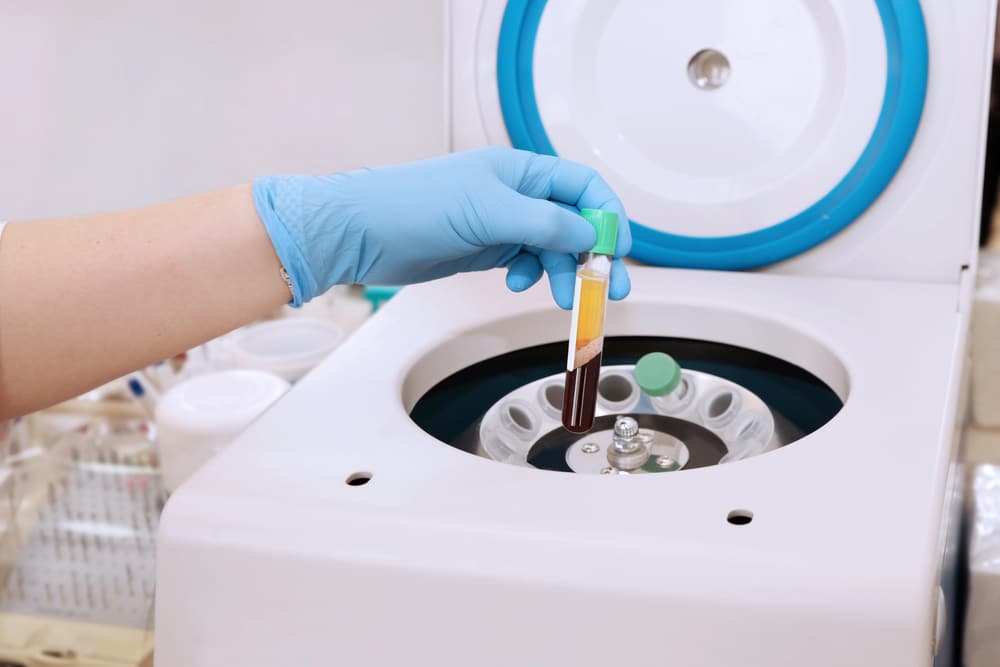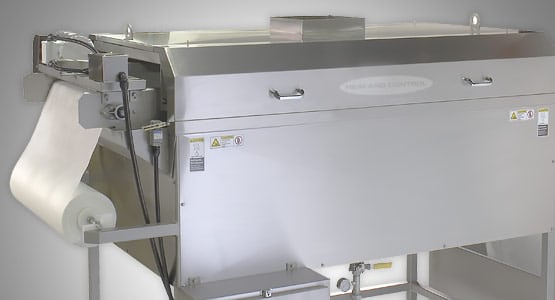Curious about the types of dust collectors?
According to IQS Directory:
The History of Dust Collectors
During the Industrial Revolution, when companies began producing high volumes of industrial waste like fine dust, wood dust, and other particles, an American, in 1852, S.T. Jones, applied for the first dust collector patents, a single bag filter. Jones‘ work was followed in 1921 by Wilhelm Beth, a German inventor, who patented a three filter dust collector design with a focus on filtering air and gas.
In the1950s, the air filter industry was transformed by the reverse air jet system, which led to the pulse jet filtration system later in the decade, which brought down the number of mechanical parts involved in air cleaning. Since the 1970‘s and 1980‘s, when air quality requirements and pollution restrictions became more stringent, dust collectors have become essential. Today, the dust collecting industry is developing smaller, cleaner, and more efficient separating and filtering equipment for dust collection.
What Is a Dust Collector?
Dust collectors are air cleansing equipment designed to improve commercial or industrial air quality by capturing particulate matter. They filter pollutants and solid particles that the government has banned in response to the air pollution crisis and trap them. Particles released during manufacturing are hazardous and can lead to respiratory damage as well as other health problems. Dust collection systems transform contaminated air, through a system of filters or separators, by collecting them.
The Occupational Safety and Health Administration (OSHA), founded in 1971, has established regulations regarding the quality of air in industrial facilities. The Environmental Protection Agency (EPA), founded in 1970, regulates the limits of emissions from companies for dust, smoke, and fumes that could be released into the atmosphere. Industrial operations must adhere to the regulations of these organizations or face severe penalties up to being required to close their operations.
To meet the stringent guidelines, manufacturers and producers rely on dust filtration systems and collectors. The type of pollution and manufacturing process determines the type of collector. Only collectors that have received the approval of OSHA and the EPA are permitted to be installed. Companies are very careful to select a system that fits their manufacturing process and must make regular checks for the ratio of particulates to pure air.
Air pollution is measured using the air quality index (AQI). As the index rises, air pollution becomes unhealthy. Every country determines what they believe to be an acceptable level of air quality. The daily readings of air pollution are measured and converted into a numerical equivalent from zero upward. Any AQI below fifty is considered to be good. Air quality values of 300 to 500 are an indication of hazardous health conditions.
Dust Collecting Systems

Dust collecting systems are equipment that work to minimize dust particle contamination in workshops, plants, and manufacturing facilities. Fabrication industries use processes that release millions of hazardous particles. To protect workers, and conform to EPA regulations, companies install dust collecting equipment.
Although dust collecting systems can take up a lot of space and are not easy to reconfigure once designed, the benefits of using effective, efficient dust collecting systems can improve equipment longevity and worker health.
The components of a dust collecting system include overhead ductwork, capture arms, suction hoods, and a central suction unit to pull in the collected dust from other units. Systems can include a single collector or multiple ones depending on its design. The main part of a dust collecting system is the blower, which has an engine, fan blades, and rotor motor. Filters include a blow pipe, housing and hopper, clean plenum, tube plate, compressed air header, bag, and cage.
The first dust collectors used bag filters that trapped dust by having it blown by a fan into a bag, which was followed by a series of filters. The present systems come in two types – positive and negative and are classified by where the fan and blower are placed. Positive air pressure is where air is blown into the filter while negative pressure is where dirt is pulled into the filter. The negative type is placed in an enclosure to create a negative pressure space, vacuum. It is a more efficient design that provides greater control and includes safety and functionality features.
Variation on dust collectors include ones that are portable for the collection of small amounts of dust. They use a small fan to draw air into a cartridge filter where the dust is collected releasing clean air. Certain downdraft dust collectors are portable. The portable versions have one or two extraction arms. One of the arms can be removed to convert the dust collector into a downdraft collector.
Types of Dust Collection Systems
With the growing concern for the environment and the amount of contaminants that have been released, engineers are constantly searching for new ways to filter and clean the air that is released by industrial processes. The dust control and collecting systems industry has been growing rapidly since its inception in the 19th Century.
The main types of dust collecting processes are inertial separators, fabric filters, wet scrubbers, electrostatic precipitators, and unit collectors. Each of the different types are designed to meet the needs of specific industries regarding the type of particulate material to be collected.
The function of dust collectors can vary according to their purpose. Industries that produce fine granular products may use a dust collector to collect material that has escaped during the production process. Fume and smoke collectors can filter extremely small particles.
Below is a brief description of the various methods and are just a few examples of the techniques presently being used for dust collection and air purification.
Cyclone Dust Collectors
Cyclone dust collectors are inertial separators which use centrifugal, or cyclonic, air movement within a hopper chamber to separate particles from the air. The heavier particles are thrown against the outer wall of the hopper and fall to the bottom into a collection chamber.

Cyclone dust collectors are available in a wide range of sizes and configurations for increased efficiency for different applications, from massive multi-cyclone outdoor collectors designed for the cement industry to “lab-scale” mobile cyclone dust collectors designed for use in pharmaceutical pill and tablet manufacturing. Whatever the precise application, cyclone dust collecting systems can used to help ensure worker health and equipment longevity.
Inertial Separators
Inertial separators uses gravitational, centrifugal, and inertial forces to separate dust particles from a stream of gas. The three types of inertial separators are settling chamber, baffle chamber, and centrifugal collector.
Settling chambers reduce the speed of the air stream. As the air stream loses momentum, the heavier particles settle out. Larger particles fall faster than smaller ones making this process more effective for pre-cleaning and environments with large particulate emissions.
Baffle chambers have a baffle plate that forces the air stream to suddenly change direction. The inertia of the heavier particles forces them against the plate from which they fall to the bottom of the chamber. Baffle chamber cleaners are used as pre-cleaners to remove large air particles.
Centrifugal collectors use cyclonic forces to separate contaminates from the air. The air stream enters the dust collecting chamber at an angle where it is spun. The rapid circular motion pushes the heavier than air particulates against the wall of the chamber. As they hit the wall of the chamber, they lose momentum and fall into the collector.

Baghouses
Baghouses, also known as bag filters or fabric filters, are a type of dust collector, which is any system or machine that draws dust out of the air into a filter or separator. In this same group are equipment like air scrubbers, electrostatic precipitators, wet scrubbers, unit collectors and inertial separators. By removing contaminated air particles from the environment around them, baghouse and dust collecting systems like them improve air quality and worker health and safety.
Baghouses are most often made from fiberglass materials, cotton, or various other synthetic materials. To determine the best baghouse materials and configurations for your application, call a trusted dust collection professional today. Once you have your baghouse, make sure to care for it properly by paying attention to the following factors of its performance: gas temperature, pressure drop, opacity and gas volumetric flow rate. Provided all of these elements are watched and corrected when wrong, you can count on your baghouse to clean your air efficiently for many years to come.
Downdraft Tables
Downdraft tables are installed in a work table. Depending on their design, they can either automatically clear dirt away from the work area or be activated by a worker. They are normally located under the work surface and have one or two foot openings that can be two, three, four, or more inches wide. Prior to downdraft tables, worktables had a hole to shove waste materials into similar waste containers at fast food restaurants.
Downdraft tables are designed to contain and exhaust heavier than air particles, lighter than air particles, fumes, fine particulates and powders. The top of downdraft tables is a perforated rigid grill through which airflow is both possible and uniform. Once air is pulled down through the perforated top it enters an exhaust chamber mounted directly underneath the top. The exhaust chamber contains filters that can capture particles as small as .5 microns.

Jet Dust Collectors
Jet dust collectors are a specific type of baghouse, which uses jets of reversed air to shake the dust-caked fabric bag filters free of dirt. Differential pressure sensors read the air pressure of the dirty air and the amount of clean air. When the pressures get too high, the filter cleaning system is initiated.
Jet dust collectors are one of the most widely used types of dust collecting systems because they require little maintenance, can clean high density dust and offer excellent filter efficiency. However, jet dust collectors take up more space than most other types of dust collectors, often requiring outdoor installation. Industries that benefit from jet dust collectors include pharmaceutical, cement, iron and steel, petrochemical, agricultural, food processing, automotive and mining. Ideal applications for jet dust collectors include product recovery, dust capturing, separating and filtering explosive media, metalworking chips, toxic media, central vacuum cleaning and pneumatic conveying.
Fabric Filters
Fabric filters, or baghouse filters, use an enclosure that is filled with bags that filter the air and remove pollutants. Contaminated air is pulled into a hopper shaped baghouse with fabric filters made of cotton, glass fiber, or a synthetic material. The air stream is pulled through the fabric bags by a vacuum creating fan. The bag lets air pass through but captures the particles and pollutants. The cleaned air exits through an outlet. The collected particles remain in the filter or settle to the bottom of the hopper.
There are two main types of baghouses – reverse and pulse jet. The reverse version has bags suspended in a frame at the bottom of the baghouse. They are called reverse because air has to be pulled into the baghouse to remove pollutants from the bag and send it into the hopper. Pulse jet baghouses have bags mounted at the top of the baghouse. Air flows from outside the bag to inside the bag. The bags are cleaned by a pulse jet of air.
Dust Collection Equipment
Dust collection equipment encompasses a wide variety of devices and systems designed to minimize air particle contamination in workshops, plants, manufacturing facilities or any commercial or industrial space. The pollutants produced in these environments, such as volatile organic compounds, metalworking chips, hydrocarbon and solvent fumes can have serious environmental and biological ramifications if not properly removed from the air and disposed of.
While systems can be singular, most high use equipment employ multiple filtration devices, some using up to four filter components. Baghouses, cartridge collectors, wet and jet dust collectors, ambient units, collection booths, downdraft tables and overhead hoods are all specific pieces of equipment. Baghouses are the most common apparatus employed due to efficiency and versatility. Units may be portable dust collectors or stationary.
Portable Dust Collectors
Portable dust collectors maintain the air quality of a variety of commercial and industrial facilities, such as those that conduct manufacturing processes like carbon machining and woodworking, by capturing contaminated air then filtering it. Other environments that benefit from their presence include those involved in metal grinding, concrete grinding, blasting, composite manufacturing, welding and pharmaceuticals. Still other applications they serve are in post-flood/fire/disaster building restoration. Among the most common portable dust collector types are wet scrubbers, air scrubbers, unit collectors, bag houses, electrostatic precipitators and inertial separators.

Common applications for portable dust collectors include the collection of welding smoke, plastic dust, chemical fumes, pharmaceutical dust, soldering fumes, wood dust, grinding dust, dust debris and other fine particles. Industries that benefit from portable dust collectors include pharmaceutical, metal grinding, woodworking, composite manufacturing, blasting and welding. As the dust collecting industry advances, smaller and more efficient portable dust collection equipment is being developed to meet increasingly strict environmental regulations.
Industrial Dust Collectors
Industrial dust collectors are devices used to minimize the presence of various pollutants in order to maintain a high standard of clean air in workshops, plants, manufacturing facilities or any commercial or industrial space. The pollutants produced in these environments, such as volatile organic compounds, hydrocarbon and solvent fumes, can have serious environmental and biological ramifications if not properly removed from the air and disposed of. Because of the potential hazards to worker health as well as other concerns related to air quality, regulatory and insurance agencies sometimes require that dust collectors be used to maintain healthy work environments. Some regulations even require certain degrees of soundproofing be installed around these commonly loud machines to further protect workers.
Wet Scrubbers
Wet scrubbers, or wet dust collectors, use a scrubbing liquid that collects particulates and gases. Water is the most common solvent. An encapsulated container is filled with water. Contaminated gases are passed through the container where the water absorbs the contaminants, and clean air exits the container.
Other liquids used for wet scrubbers have to meet certain standards. For one to be selected, it must have a chemical composition that will combine with pollutants. An absorbing solution can be positively charged, negatively charged, or uncharged. The composition of the liquid must match the pollutant‘s chemical makeup and be able to bind with it.

Electrostatic Precipitator
An electrostatic precipitator uses electrostatic force to grab and hold contaminants. It is made with wires and collection plates. When high voltage is applied from an electrostatic field between the wires and plate, the air becomes electrically charged and ionized. The particles get charged with the air causing them to attach to the collecting plate. The remaining electrically charged air moves out leaving the particles behind.
The collected particles are removed in a variety of ways, which include shaking, scraping, or simply washing the plate. Once collected, they are disposed of. When the process is scaled up for ash or similar particles that require more energy, cleaning is adjusted.
Spark Arrestors
Spark arrestors have a long history and were first used when fire in a hearth was the only method of heating. To prevent embers from going up the chimney and setting things on fire, wire frames were placed in the chimney to trap them. The principle behind spark arrestors is to trap or pulverize carbon particles that are larger than 0.023 of an in. Properly installed and maintained spark arrestors reduce the risk of fires. The most common type is a variation of the wire in the chimney.
One form of spark arrestor traps carbon particles from an exhaust system. The large carbon particles are screened by centrifugal force where they are collected. Centrifugal spark collectors use the same principle as centrifugal dust collectors. In some cases, a spark arrestor is included as part of a centrifugal dust collector.
Industrial spark arrestors are used in metal and low load material processing. They cool sparks by turbulence in the air flow stream, which disturbs the thermal bubble surrounding the spark by lowering the temperature of the gas stream. The process is used in conjunction with other dust collecting devices.

Used Dust Collectors
Dust collectors for industrial use are large complex expensive. For small start up businesses that are required to have a pollution control device, a used dust collector is less expensive and more cost effective. Used dust collectors are just as efficient as new ones. Suppliers purchase used equipment and follow a strict refurbishing process to clean, restore, test, and repair them for resale. In most cases, it is difficult to tell the difference between a used one and a new one.
Resellers offer training and guidance regarding installation and use of the equipment with manuals that outline equipment use and the types of particles that it will be captured. The variety of used dust collectors includes booths, cartridge collectors, mist collectors, portables, ceiling-hung, bin vent systems, wet scrubbers, and downdraft to name a few.
When shopping for a used dust collector, it is wise to examine the essential parts such as the motor, types of filers, suction arms, hoods, electrical panels, and exhaust ducts. Doing research and being familiar with the workings of a dust collector can be beneficial in making a wise purchase.
The majority of dust collectors rely on an electrical motor to power the system, which can have a power cord or run on battery power. Filtration systems of dust collectors vary depending on its function, the manufacturer, and the design. Suppliers usually have information about filters and can supply them. The best type of filter is the high efficiency particle type (HEPA) that is recommended by the majority of producers.
Size, area of the work space, industry, needed capacity, and air purity requirements are issues that need to be discussed with the supplier. These factors will help them to choose the best type of equipment to fit your needs. Another important factor is the air quality requirements for your community, which radically vary depending on the location of your business.
As with any form of industrial equipment, air cleaning systems require regular maintenance. Most suppliers offer a maintenance agreement that guarantees routine checks of the system on a weekly, monthly, or bi-monthly basis. Purchasing these agreements is an excellent way to avoid problems due to being uninformed. Regardless, it is wise to know how to check the filtering device and be able to determine if there is a problem.
There are ever growing concerns about the environment and pollutants. OSHA and the EPA have specific regulations regarding dust collection equipment that have to be strictly followed. All suppliers are well aware of the stipulations and restore collection system to be in compliance.









